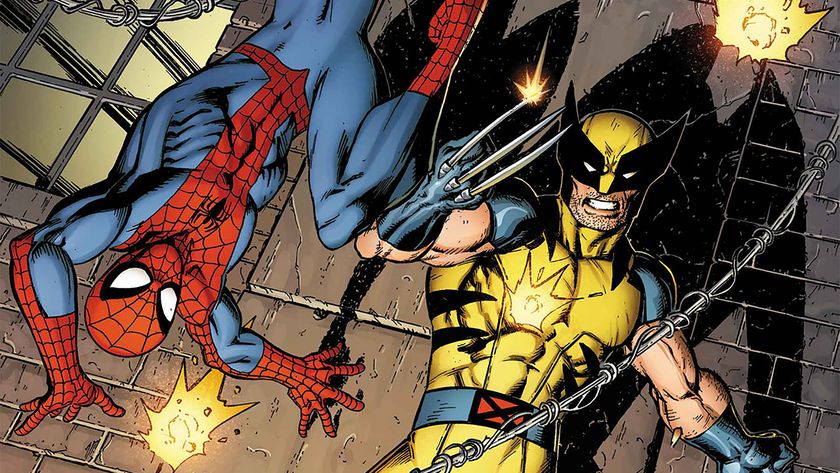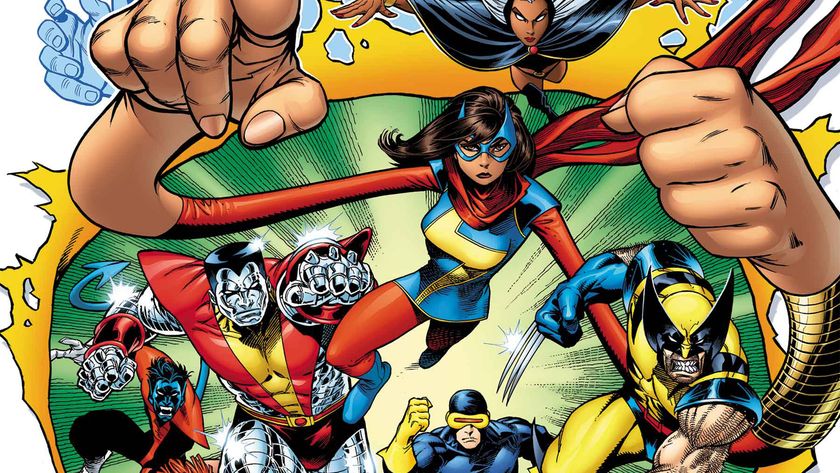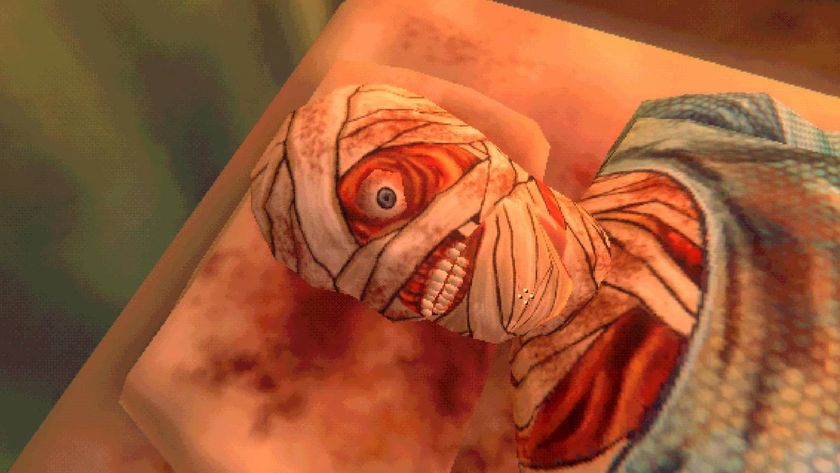Kurt Busiek returns to Amazing Spider-Man for a new untold tale with #850
Busiek talks about his and Chris Bachalo's story in the milestone Amazing Spider-Man #850
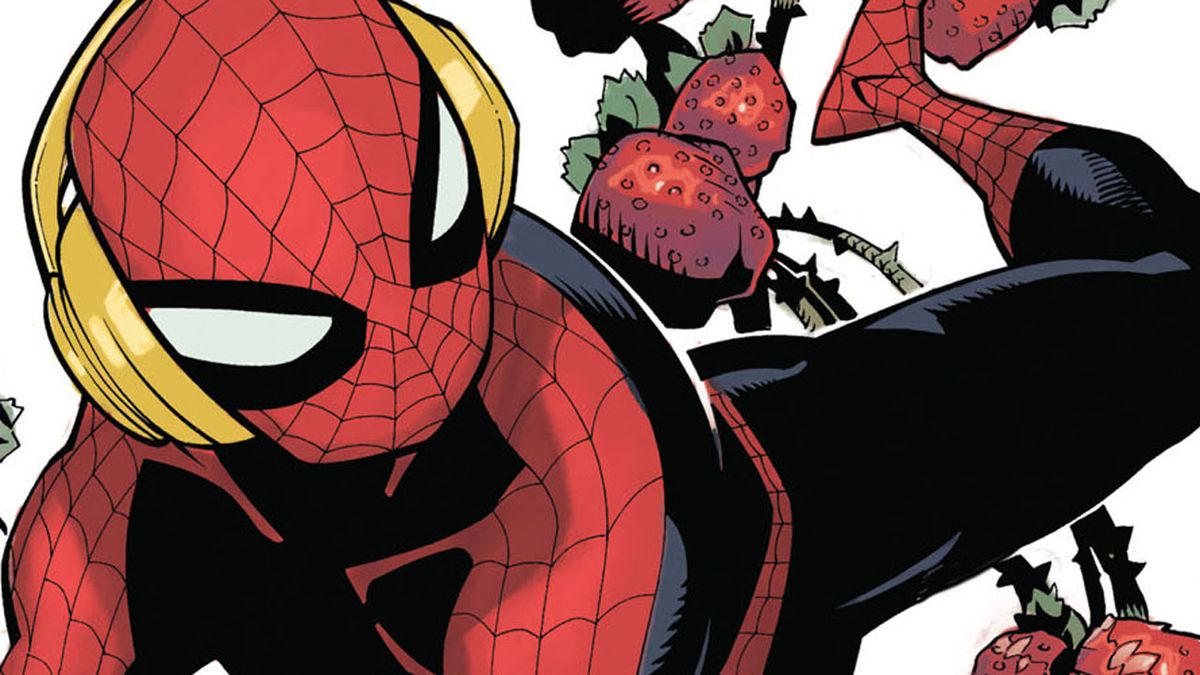
Marvel's Amazing Spider-Man will be celebrating 850 issues on October 7 with the release of the current volume's Amazing Spider-Man #49. And in addition to a lead story from the current run's creators, they are also welcoming Spider-Man creators of the past - including Kurt Busiek, Chris Bachalo, and Tim Townsend.
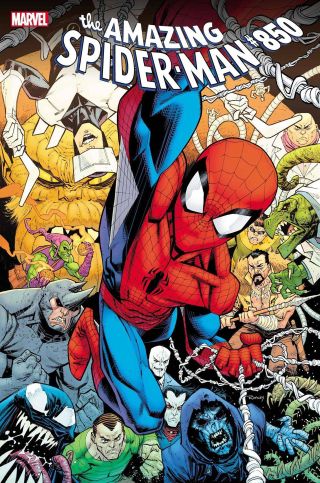
Themed as some sort of spiritual continuation of Busiek's '90s series Untold Tales of Spider-Man, Amazing Spider-Man #49's 'All You Need is...?' short takes Peter Parker back to junior college for some classic action - and even a classic villain, the Red Rajah.
And if you're a fan of Chris Bachalo's artistic idiosyncrasies, get ready: there are strawberries. Lots of strawberries.
Newsarama spoke with Busiek ahead of Amazing Spider-Man #49/#850's release, delving into his past with the wallcrawler, what's changed in him (and Pete) since then, and also what the hero's motto of "With great power must also come great responsibility" means here now in 2020.
Newsarama: Kurt, you've been writing Spider-Man in one context or another since at least the early '90s, including your title Untold Tales of Spider-Man. How has your perspective on Peter Parker evolved in that time?
Kurt Busiek: I don't know that my perspective's evolved all that much, really — the Peter of today is older than the guy I wrote in Untold Tales, but at heart, I think he's the same guy. He does his best, makes mistakes, works to fix those mistakes, values the lives and well-being of others over his own… he's in different situations today than he was in high school, but he's still guided by that eternal credo: With great power there must also come great responsibility.

That's one of the things I like about him so much. He may be a scientific genius, but he's a very relatable guy. He's not an expert in dealing with the world, in juggling his responsibilities, in managing the pressures of life — and that's something we can all see ourselves in. When I first read Steve Ditko/Stan Lee run, long before I became a writer, that's what I saw in Peter Parker, and I'm glad it's still around, whatever circumstances he finds himself in.
Comic deals, prizes and latest news
Get the best comic news, insights, opinions, analysis and more!
Nrama: Amazing Spider-Man #850 marks a milestone issue with the return of the Green Goblin, and a brief return to classic numbering. What does your portion of the issue entail?
Busiek: My story's an action-oriented piece about Spidey back in his college days, working for J. Jonah Jameson between classes and getting caught up in a battle with an old Defenders villain called the Red Rajah.
It also involves the Beatles, but I'll let people read it to find out precisely how.
And man, there are strawberries! Dangerous strawberries!
Nrama: You wrote your take on the most fateful of Spider-Man/Green Goblin confrontations in Marvels, depicting the death of Gwen Stacy. What's on your mind as you return to that classic rivalry?
Busiek: When it comes to the rivalry, I get to be a spectator this time, since it's the main story that deals with all that. Mine's a self-contained backup story. But I'll be eager to see how it all plays out in the feature story since the Goblin is one of Spidey's all-time best villains.
I mean, sometimes the Spider-books get criticized because it can seem like everyone Peter ever met is either a superhero, a super-villain, or related to a superhero or villain. But the reason Spidey creators kept returning to that well is because it works. It makes everything more immediate and personal, whether it's Flash Thompson as Venom, Doc Ock all set to marry Aunt May, Liz Allan tormented because her half-brother is the Molten Man, or whatever. And that all started with the Goblin.
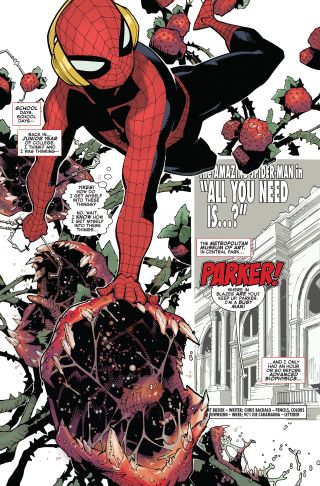
Norman Osborn made a great villain for Spider-Man even without that aspect — as a businessman with a whole industrial empire behind him, vast technological resources and weaponry, he contrasted dramatically with Spidey — he was the sultana's, he wielded real-world power, he was bigger and bulkier, more self-assured. It felt like a kid trying to find a way to be an adult, in the adult's world.
But add to that that the adult was the father of one of the kid's best friends, and knew the kid's secrets and that just galvanized the conflict to a whole new level. And everything that's come since has been built on that foundation.
As such, Spidey versus the Goblin is a fight for the ages, and it'll be a blast to see the latest round.
Nrama: On the note of legacy numbering, what do you see as the upsides and downsides of the way some titles acknowledge that large issue count in the midst of new, relaunched volumes?
Busiek: I think it's worth celebrating when you've got something to celebrate.
I'm an old-fashioned guy in a lot of ways, and I started out back when books didn't get renumbered and relaunched all that often. It still happened, though, and the numbers didn't always relate to what was being celebrated — Captain America #200 was the 200th issue of a series that started out life being called Tales of Suspense, years before it ever featured Cap, but hey, it's the 200th issue of something, so let's have a party!
On the flip side, though, even though the Hulk started out in a short-lived solo series, then got revived in Tales to Astonish, which then became another solo Hulk book, and that series has been relaunched and renumbered multiple times, if you were to hit the 1000th solo Hulk story, whatever the issue number, that's worth celebrating too, right?
So on the one hand, I might wish things were more orderly, even as I kinda shrug and figure that Marvel's going to do what's best for selling comics and reaching readers, but on the other, hey, if this is the 850th issue of Amazing Spider-Man, across multiple relaunches, then that's cool, that's a landmark achievement. Let's have fun with it!
Nrama: For this Amazing Spider-Man #850 story you're working with Chris Bachalo. As far as I know, you've never worked with him before. How is that going?
Busiek: I got to work with the fantastic Chris Bachalo, doing the pencils and colors, and his partner in crime, the also-fantastic Tim Townsend, on inks. And Joe Caramanga made us all look good with a sharp and energetic lettering job.
The way it started, Nick Lowe asked me for a short story, and told me the gates were wide open — I could do a new "untold tale" or a modern story, pick any era to play with. I came back at him a few days later with a fistful of ideas, and he liked one involving an old '70s Defenders villain called the Red Rajah, because he thought it made for fun action and visuals.
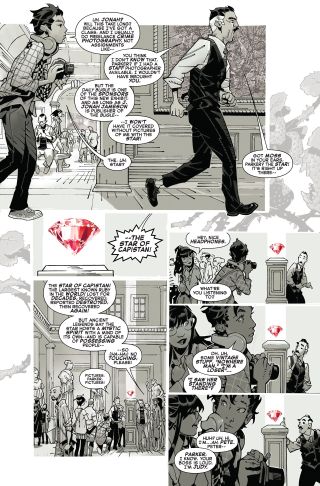
He suggested Chris for the story, which was a delight for me because I've never had the chance to work with Chris but I love his art. Nick told me that Chris would have fun drawing organic stuff, vegetation. So I wrote up a plot, setting much of the story in Central Park, where Chris could work with more than buildings and streets.
And man, Chris went to town. He jumped off a couple of small pieces of the plot to build a central theme to it that transformed the story — I pretty much gave him an action-adventure skeleton, and he layered character and humor and wit and dangerous, dangerous strawberries on top of it, making the story into something much richer and more fun.
This is one of the things I love about working plot-style. Writing full-script is often important for certain kinds of stories, but giving an artist a plot and letting them rework the pacing, the visual aspects, make the story their own…it can bring you things you'd never have gotten if they were locked into a script. And that's definitely the case here. Writing the dialogue to fit what Chris drew was a challenge and a treat, and it made for a much better story.
And I crack up every time I see Spidey's last line. I hope readers will, too.
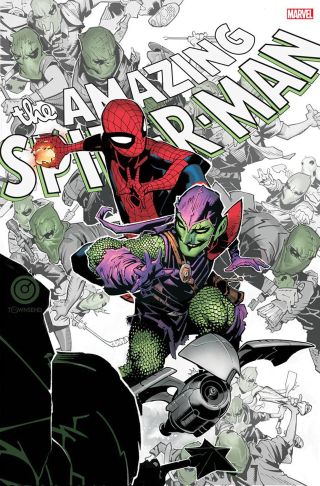
Nrama: The core moral of Spider-Man's story has always been "With great power must also come great responsibility." What has Spider-Man instilled in you, both as a reader and as a creator?
Busiek: I think the key takeaway isn't even about super-powers. After all, way back in Amazing Fantasy #15, even without powers, Spider-Man could have tripped the burglar, and everything would have worked out better. Leaving aside, of course, that if he didn't have powers he wouldn't have been there at that moment, but never mind.
The key is that we all have power — great power, small power, whatever, each of us make choices about what to do in our lives, and those choices affect other people. So we need to use the power we have responsibly.
Because with any power comes the responsibility to use it well. That's the core idea at the heart of Spider-Man, I think, and it's another reason why he's so relatable as a character. It's essentially a message about good citizenship. We're all in this together, and we all make choices that affect each other, so let's think about that and do our best to make choices that aren't selfish, that don't hurt other people. Even if we never meant for those people to get hurt at all, as Peter never meant to hurt Uncle Ben, we still affect each other's lives.
So we may not be able to stick to walls or swing across the city, but we can all do our best to make life better — in our neighborhood, in our city, our country, the world.
That's our power. And our responsibility.
Kurt Busiek is one of the top writers to have written Spider-Man, but how does he rank in our list of the best Spider-Man writers ever? Find out, and then let us know what you think.
I've been Newsarama's resident Marvel Comics expert and general comic book historian since 2011. I've also been the on-site reporter at most major comic conventions such as Comic-Con International: San Diego, New York Comic Con, and C2E2. Outside of comic journalism, I am the artist of many weird pictures, and the guitarist of many heavy riffs. (They/Them)
Most Popular







